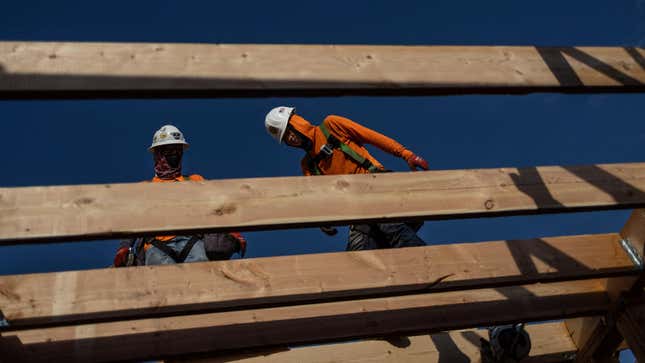
The Federal Reserve Bank of Atlanta’s real-time GDP tool initially predicted robust 3.5% growth for the US economy in the third quarter of the year. Following strong construction and manufacturing data, the GDP tracking instrument now bumped that forecast up to 3.9%.
The official measure of US GDP will come out much later in the year, after all of the data has been collected by the Bureau of Economic Analysis. In the meantime, the Fed’s real-time measure can sometimes serve as an indication of where growth is headed in the economy.
This rosy outlook follows a 2.4% GDP increase in the second quarter, outshining economists’ predictions for a 1.8% rise and the first quarter’s 2% uptick. (To be sure, the tool isn’t an official forecast from the Fed staff, but it is calibrated to try to predict GDP in real time).
The manufacturing funding that Congress and the Biden administration unleashed in 2022 is encouraging more corporate investment in infrastructure and equipment, despite steeper borrowing costs. The solid investment data exemplifies how well-structured stimulus can “crowd in” instead of “crowd out” private money and help businesses safely invest in capital-intensive projects.
How long will public investment push up GDP?
Investment boosts GDP growth not only because it increases a country’s ability to offer goods and services but also because that funding has to cycle through the economy until it hits someone’s savings account, noted Alex Williams, an economist at labor advocacy firm Employ America. Construction companies like Caterpillar are beating earnings, demonstrating the initial signs of industrial funding permeating the economy and boosting economic activity.
With the Fed’s key inflation measure hitting a two-year low, consumer confidence hitting a two-year high, and unemployment stable at 3.6%, stock markets remain upbeat. There’s room for lower inflation in housing, motor vehicles, food services, and in-person services that consumers overwhelmed after covid-19 restrictions were lifted, according to economists at Employ America. Both the Fed’s policy committee and its staff see no recession in sight.
Equity markets are happy with the steady stream of positive news. As of late July, 90% of stocks in the S&P 500 were trading above their 50-day moving averages, according to FactSet, a financial data tool. Meanwhile, economists have begun to bet that the Fed is done raising rates this year.